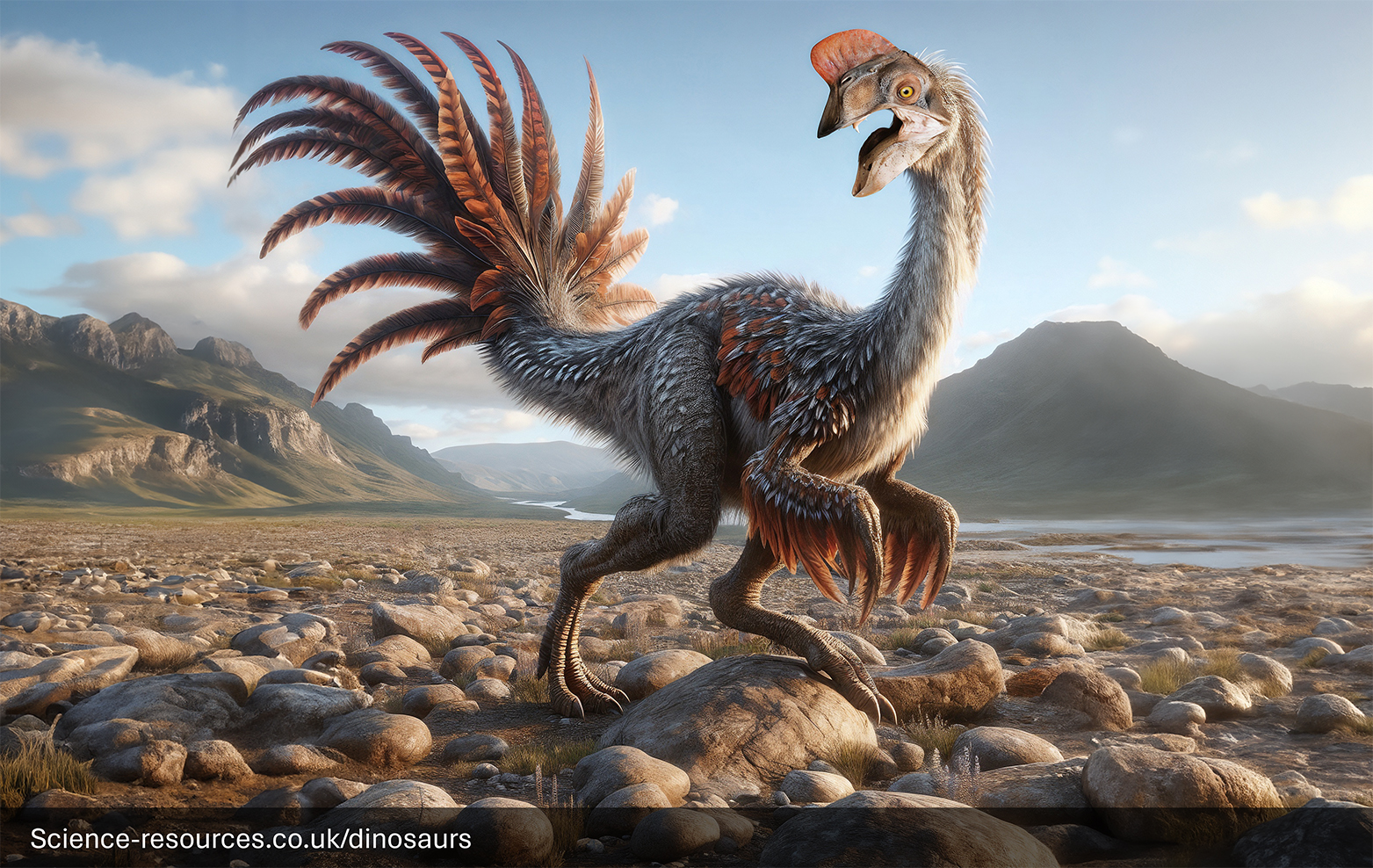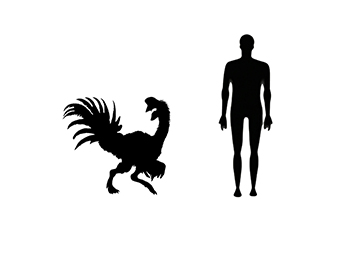Dinosaurs A:Z | O
You may also be intrested in: Free Dinosaur games
Dinosaurs: Oviraptor (Egg Thief)
You may also be intrested in: Free Dinosaur games
Oviraptor was a small, lightly built dinosaur that lived during the Late Cretaceous Period, around 100 to 65.5 million years ago. Despite its name, which means "egg thief," it was actually a protective parent that brooded its own eggs. • Height: Oviraptor was about 1 meter (3 feet) tall at the shoulder. • Length: It could grow up to 1.8 meters (6 feet) long. • Weight: Oviraptor was smaller and lighter compared to many other dinosaurs. Oviraptor had a short skull with large eye sockets surrounded by a bony ring, possibly giving it stereoscopic vision. It had a beak instead of teeth and a thin, bony crest on its forehead, which may have been used for identification or display. Interestingly, some Oviraptors had two teeth in the roof of their mouth. They also had long hind limbs for running and long, slender forelimbs with clawed fingers for grasping. Oviraptor Generative AI Notification: Some elements of this image have been created or enhanced using AI technology. To find out how we create all our dinosaurs, click here. Oviraptor's diet is still a bit of a mystery. Initially thought to steal and eat eggs, it was discovered that it guarded its own eggs. Some scientists believe Oviraptor might have eaten shellfish or plants, as its beak and jaw structure were not suited for meat eating. Fossils of Oviraptor have been found in deposits from Asia, particularly in the Gobi Desert of Mongolia. It lived on land and was a good runner, which helped it escape from predators. • Oviraptor brooded its eggs like modern birds, sitting atop nests to keep them warm and protected. • The bony crest on its forehead may have changed size and shape as it grew older, possibly helping to identify individuals or differentiate genders. • Oviraptor skeletons have been found in a brooding position atop nests, providing evidence of its parental care. • Scientists believe Oviraptor might have had feathers, similar to modern birds, supporting the theory of the evolution of dinosaurs to birds. What is an Oviraptor?
How big was Oviraptor?
Appearance

What did Oviraptor eat?
Where did Oviraptor live?
Interesting facts
Pronounced: OVE-ih-RAP-tor


Oviraptor Facts
Name Means: "Egg Thief"
Length: 8 feet (2.5 m)
Height: 2 feet (.7 m)
Weight: 70 pounds (30 kilos)
Diet: Carnivore (Meat)
Time: Late Cretaceous - 67 million years ago
Habitat: Semi-Desert
Fossils Found: Asia
Oviraptor is classified as a member of the family Oviraptoridae, a small family of toothless dinosaurs.
Oviraptor was originally thought to be an egg thief because it was found with eggs, but later studies revealed that the eggs were its own. It was actually a nurturing parent, not a thief.
Q1: What is an Oviraptor?
A1: Oviraptor was a small, bird-like dinosaur that lived during the Late Cretaceous period, around 75 to 70 million years ago. Its name means "egg thief" because it was originally thought to steal eggs.
Q2: How big was the Oviraptor?
A2: Oviraptor could grow up to 2 meters (6.6 feet) long and weigh around 20-30 kilograms (44-66 pounds).
Q3: What did Oviraptor eat?
A3: Oviraptor was likely an omnivore, meaning it ate both plants and small animals. It may have fed on eggs, insects, and small reptiles.
Q4: How did Oviraptor move?
A4: Oviraptor was a fast and agile runner, moving on two legs. It had strong hind legs and a lightweight body, which helped it move quickly.
Q5: Where have Oviraptor fossils been found?
A5: Fossils of Oviraptor have been discovered in Mongolia, particularly in the Gobi Desert.
Q6: What makes Oviraptor unique among dinosaurs?
A6: Oviraptor is unique because of its beak-like mouth and crest on its head. It also had a toothless beak, which was unusual for dinosaurs.
Q7: How do scientists learn about Oviraptor?
A7: Scientists study fossils, including bones and sometimes eggs, to learn about Oviraptor. They also use modern technology like CT scans to examine the fossils in detail.
Q8: Did Oviraptor live alone or in groups?
A8: It's not entirely clear, but some evidence suggests that Oviraptor may have lived in small groups or pairs.
Q9: What new discoveries have been made about Oviraptor?
A9: Recent discoveries have provided new insights into the diversity of oviraptorid dinosaurs, showing that there were many different species with varying features.
Q10: Why is Oviraptor important to study?
A10: Studying Oviraptor helps scientists understand more about the diversity of life during the Late Cretaceous period and how these amazing creatures adapted to their environments.
Which family of Dinosaurs did Oviraptor belong to?
Mistaken identity
Oviraptor FAQ
You may also be intrested in:
Tags: How big was Oviraptor, Oviraptor size, where does Oviraptor live, how tall are Oviraptor, what does Oviraptor mean, Oviraptor, Oviraptor facts